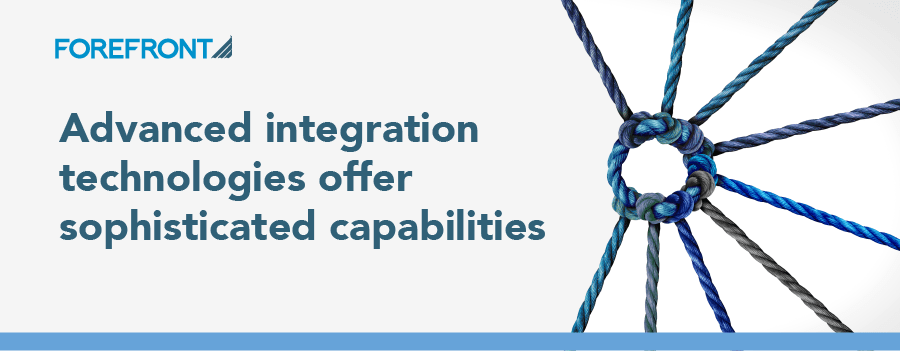There are significant benefits in optimizing Contract Lifecycle Management, in particular the Buy-Side (buying things) and Sell-Side (selling to clients). These benefits include:
-
Increasing compliance governance
-
Mitigating risks
-
Tracking obligations better
Simply put, there is a huge advantage for a single-platform approach to managing contracts across Buy-and-Sell-Sides. However, there are often challenges in bringing these two CLM solutions into functional realities.
ForeFront has made Contract Lifecycle Management a core focus of our business since identifying the demand for complete digital document transformation and game changing Conga CLM products. (Over a decade ago, ForeFront became the first partner of Apttus, prior to their acquisition by Conga)
Below, we will share tips for business leaders when evaluating and implementing an enterprise-wide Conga CLM solution within your organization. These insights include key questions to answer, risks to mitigate, and chances to optimize business processes.
Buy-Side and Sell-Side: Sharing One Platform
Should an organization implement Buy-Side and Sell-Side Contracts within the same environment?
Overall… Yes!
Ultimately, this is a business decision based on a broad number of factors and considerations. Our belief is that too many businesses and implementers automatically separate the Buy-and-Sell-Sides into two different implementations and instances, based on the disparate functions and goals. ForeFront, however, has had tremendous CLM success bridging the gap to implement cohesively and simultaneously with Conga CLM solutions.
Our approach to any project is to first, seek to understand before advising. When a potential client is considering a shared platform for Buy-Side and Sell-Side, we ask our clients to analyze:
-
Does your organization’s Sell-Side and Buy-Side share legal or administrative resources?
-
Is there a desire to reduce the number of legal variations for the same/similar clauses? Would reducing the variations, particularly for a global multi-lingual organization, allow for reduced organizational risk and increased alignment?
-
Would your CLM solution need to integrate with similar upstream (e.g. CRM or Master Data Management [MDM]) or downstream (e.g. Accounting and Finance [ERP]) systems?
-
Is there the potential to access multiple budgets simultaneously to defray a team’s cost for the implementation?
-
If a single business unit is implemented first, will their business requirements account for the needs of the following business unit?
CLM Buy-Side and Sell-Side: More About Business Rules than Technology
What about the other considerations of simultaneous implementations?
You may have noted that considerations we did NOT include pertained to security, processes, and approvals. This is because with strong contract lifecycle management solutions, these become business decisions and not technology considerations. ForeFront has expertise in helping organizations navigate difficult business decisions of simultaneously implementing Sell-Side and Buy-Side CLM solutions such as:
-
Which users should have access to which accounts, opportunities, and/or contracts?
-
Should Third-Party contracts leverage the existing processes or have their own?
-
How can an organization’s contracting process be streamlined to adhere to industry best practices and thereby reduce time-to-sale, increase Sales efficiency, and mitigate corporate risks?
-
What type of administrative activities can be removed from the process that allows the Sales, Legal, and Procurement teams to focus on the work they were hired to do?
-
What is the appropriate structure for approving Contracts such that the right controls are in place, but not administratively burdensome?
Buy-Side and Sell-Side: Obtaining Alignment
What is the most important consideration before beginning a CLM implementation?
Leadership. Regardless of whether your organization decides to go with a simultaneous or single business unit focused approach, the vision and value must be set from the top. If your organization does decide to implement Buy-Side and Sell-Side solutions simultaneously, then the vision of multiple business units must be, and remain, aligned.
With Sell-Side’s focus on time-to-sale and Buy-Side’s focus on protecting assets, there will be instances when a standstill could seemingly occur. This is where strong organizational and cross-functional leadership, coupled with guidance on best practices, will need to play a role in ensuring an implementation’s success.
Bottom Line
A CLM strategy considering both Buy-Side and Sell-Side is strongly recommended. This approach helps our clients address missed revenue opportunities, streamline costs, and ensure buy-goods and sell-goods are delivered and paid for according to contract terms.
From the dotted line to the bottom line, ForeFront helps our clients accelerate their CLM success with Salesforce B2B, CPQ, and Revenue Clouds.









